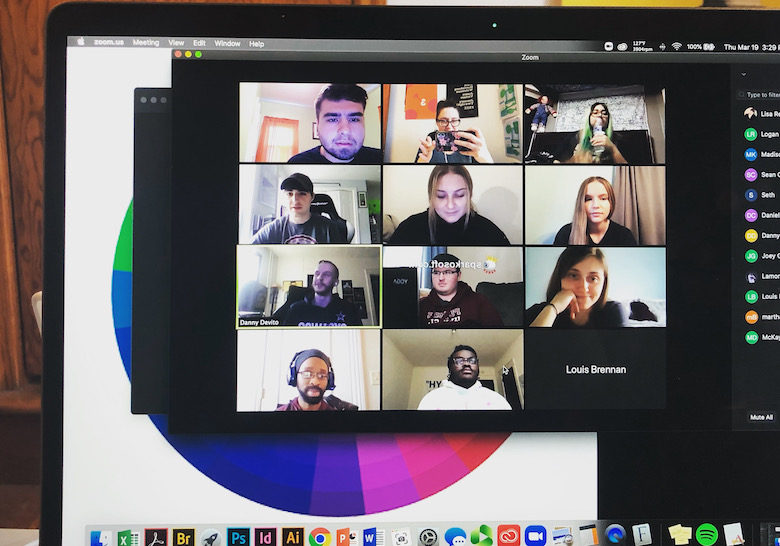Thomas Franko, Wilkes University assistant professor of pharmacy practice, says his teaching philosophy has always been to present material in a way that is both entertaining and engaging. Maintaining that philosophy has been put to the test as University classes moved to a remote learning format in response to the COVID-19 pandemic. The University announced classes would continue remotely through the remainder of spring semester.
Now that Franko is delivering his lectures in a video format, he still includes amusing stories and peppers his examples with popular culture references to superheroes and villains from the Marvel universe. But now he’s not getting the immediate feedback he gets when teaching students face-to-face.
“It’s delivering a performance without an audience,” Franko says.
Franko’s University colleagues in myriad disciplines share his experience. Ellen Newell, associate professor of psychology, says,” “Lecturing to myself alone in my office [to record videos] without the student interaction means that the flow is off. Does it make sense to tell a seemingly random story if I can’t assess in real time whether the students are making the connections? Am I rambling? How is my pace?”
Nevertheless, faculty are persevering to provide a quality education remotely – even while they are missing the day-to-day interaction with students that makes teaching rewarding.
Faculty were supported in the transition to remote learning by the staff in the University’s Office of Technology for Teaching and Learning. Wilkes faculty always have access to the University’s online learning platform, Desire2Learn or D2L, Panopto, a video platform, and other online teaching and learning resources. Faculty vary in their use of these tools during a regular semester, and the pandemic required some of them to leverage the tools for the first time. Moving to remote learning gives them a chance to master new ways of delivering lectures, discussions and assignments.
When it was determined that classes would need to transition to remote formats, the staff in the Office of Technology for Teaching and Learning moved quickly to assist them. It was a significant undertaking, with a staff of four led by Kristine Pruett’99, MS ’06, EdD ’15. Other teaching and learning staff are Jason Wagner’09, MBA ’14, Joseph Nalbone ’88, ’04, MFA ’11, Angela Greco ’05, MS ’14 and Kathy Lewis. They provided one-on-one tutorials, webinars and workshops to ensure that more than 300 full- and part-time faculty had tools to continue to teach in the virtual space. The team continues to supply support and resources for faculty as they complete teaching the semester remotely.
With the decision to continue remote learning through the end of the semester, some class requirements, such as hands-on projects, still needed to be adapted at the time this article was written. As classes launched in the online space, News@Wilkes talked to faculty about how they have adapted their classes for remote learning – and what they miss most about seeing their students. Here are some of their answers:
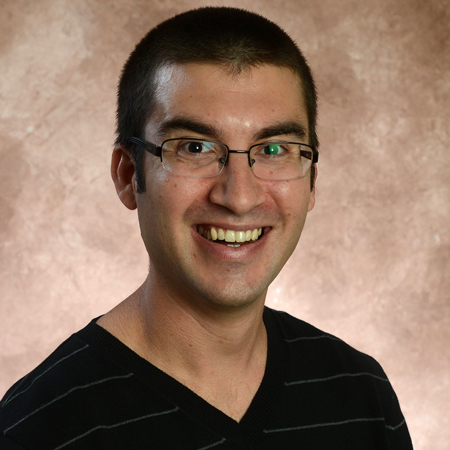
Edward Bednarz, associate professor of mechanical engineering
Bednarz says he has recorded videos for his Advanced Machine Design class –an easy transition for a class that includes a lot of lectures. However, working with students on engineering senior projects has posed other challenges. He’s moved back the due date for the projects, but the projects are done in teams and team members are separated and working in different locations. All of those issues must still be resolved. He’s been aware that he needs to ensure that students know he understands the challenges they are facing “I’ve recorded video of me talking and trying to give them encouragement and ideas. So much communication is non-verbal. It helps for them to be able to see me,” Bednarz says. He’s encouraged students to find ways to collaborate in the virtual space. “I’ve told them, ‘Good engineers solve problems: Find a way to get this done, whatever constraints or roadblocks are thrown your way.’ ”
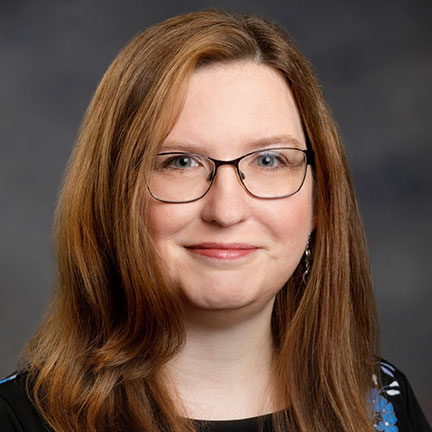
Helen Davis, associate professor of English:
Davis has been having asynchronous work as well as synchronous discussions in real time for students in her Survey of British Lit I! and Introduction to Women’s and Gender Studies classes. While not the same as meeting face-to-face, “It was wonderful to be able to interact with them in real time, even in this limited capacity,” she says. Her composition class has a writing lab and she’s designed an online approach for research papers that includes students emailing their thesis statements for feedback and virtual conferences. “I will be setting up virtual meetings via Google Meet…. I will likely need to give 30-minute slots for each student to make up for the lab time we’re missing…. With 18 students, that’s 9 hours of individual conference time. I will also record some mini-lessons that include the examples we would use to workshop particular writing skills in lab,” Davis says.
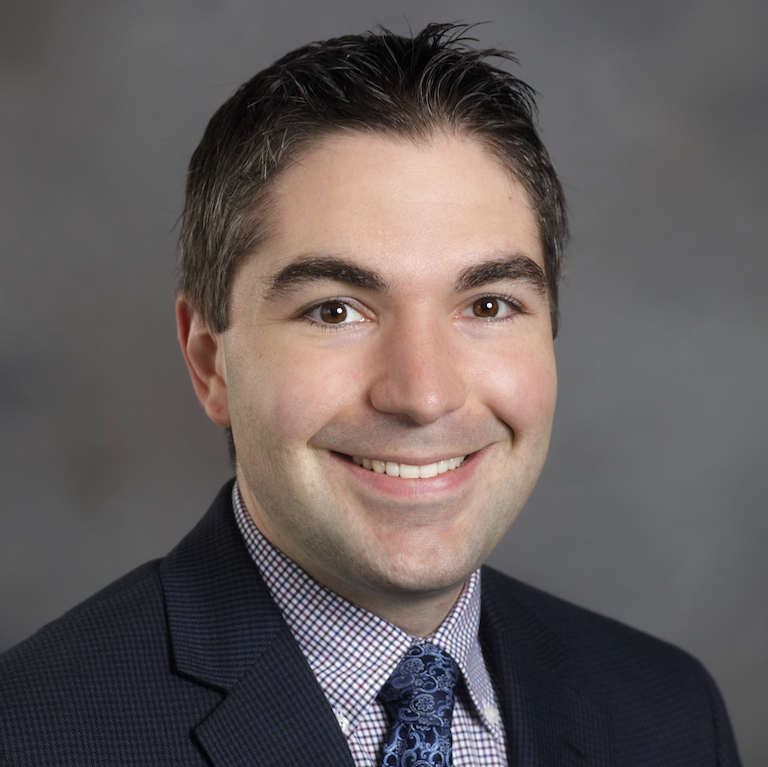
Thomas Franko, associate professor of pharmacy practice:
Franko teaches student pharmacists in their third professional year in the pharmacotherapeutics classes that cover specific medical conditions and their treatments. He says that a significant amount of materials for his classes already had been available online in short webcasts in order to free up class time for students to work in practice teams. He’s revamped some of that online content. The challenge now will be to find ways for students to work on the patient cases they normally did in groups during class. “I will give them the cases and tell them to work on them individually or talk to friends. Then we will do a Google hangout where we get together and discuss them,” Franko says. Course material that included doing math problems to determine appropriate dosing when converting from one pain medicine to another has been translated into step-by-step Powerpoint presentations.
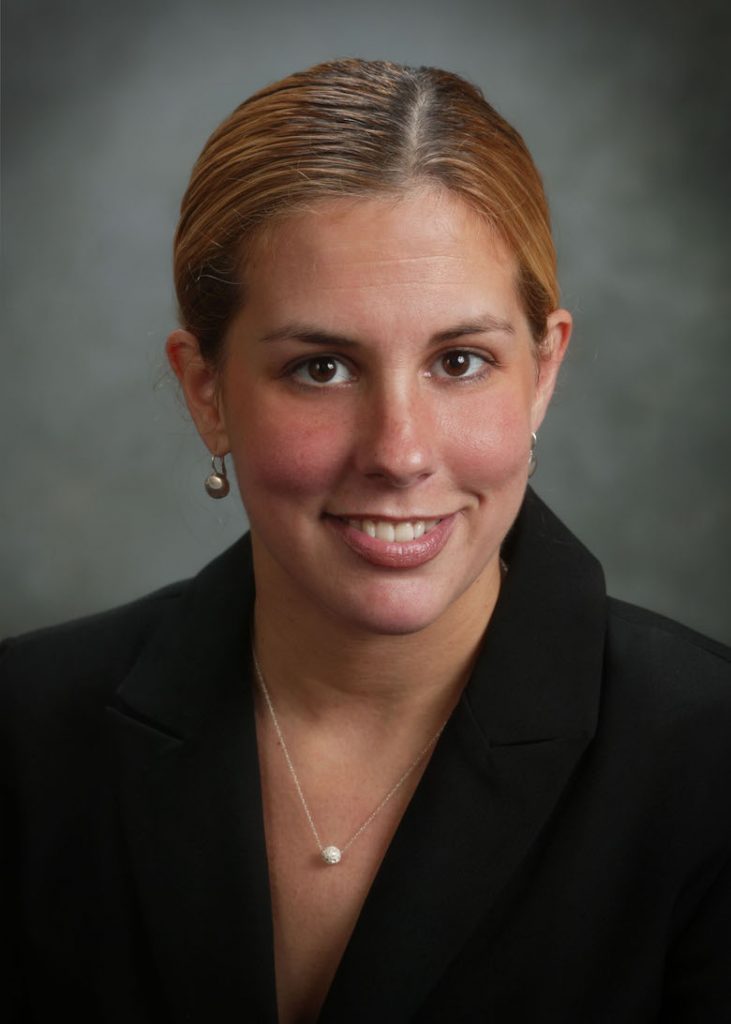
Suzanna Galella, chairperson and associate professor in the undergraduate education department in the School of Education:
Galella spoke about the class Inclusionary Practices, which is taken by all Wilkes students doing student teaching on the way to becoming PreK-12 certified classroom teachers. Those students had student teaching assignments interrupted due to school closures. The course includes opportunities to reflect on their teaching experiences and to prepare to interview for jobs. Galella explained that several class assignments have been adapted. Here are a few examples:
- Students are completing our mock interviews remotely utilizing the “Big Interview” which is a service provided our Career Services Office.
- Students use Desire 2 Learn discussion posts to complete peer review and revisions of resumes, cover letters, philosophy of education, and inclusion philosophy.
Although it’s easy to be frustrated by the situation, Galella noted, “I think we have a unique opportunity to learn from this experience and better equip ourselves to provide effective instruction in a variety of modes.”
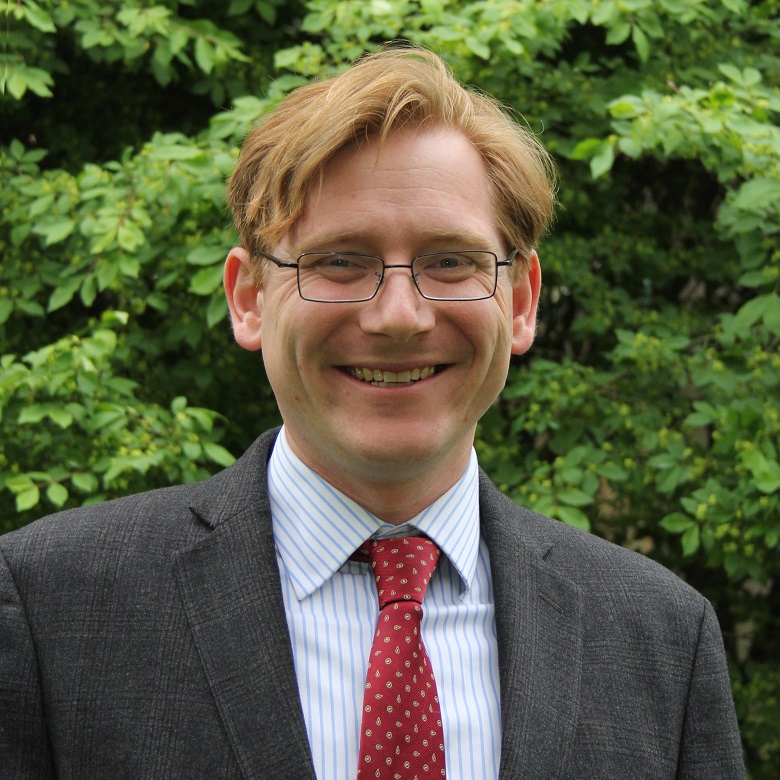
Jonathan Kuiken, assistant professor, history:
Kuiken is recording his lectures and posts them before the time the class would regularly meet. He has created online discussion boards on the Desire 2 Learn platform for the days that classes are supposed to discuss readings. “While imperfect, this system has allowed the students to express their thoughts about the readings and has led to some great (virtual) discussions,” Kuiken says. “In addition to this I have hosted regular “Digital Office Hours” during our normal class times so that students can speak with me “face-to-face” to discuss their research papers and other concerns. I won’t say that it’s flawless but so far it seems to be working.”
Although Kuiken’s making the best of the situation, he misses face-to-face interaction, including pre-class banter, thought-provoking questions and “the groans that are provoked by my bad jokes.” He adds, “I truly miss my students, my colleagues, the staff of the university. The term universitas, from which we derive the word “university,” was used first in the Middle Ages to describe a body of students and scholars who joined together for mutual aid and support. It’s that idea of gathering together in the pursuit of scholarship, learning and growth that technology can never replicate.”
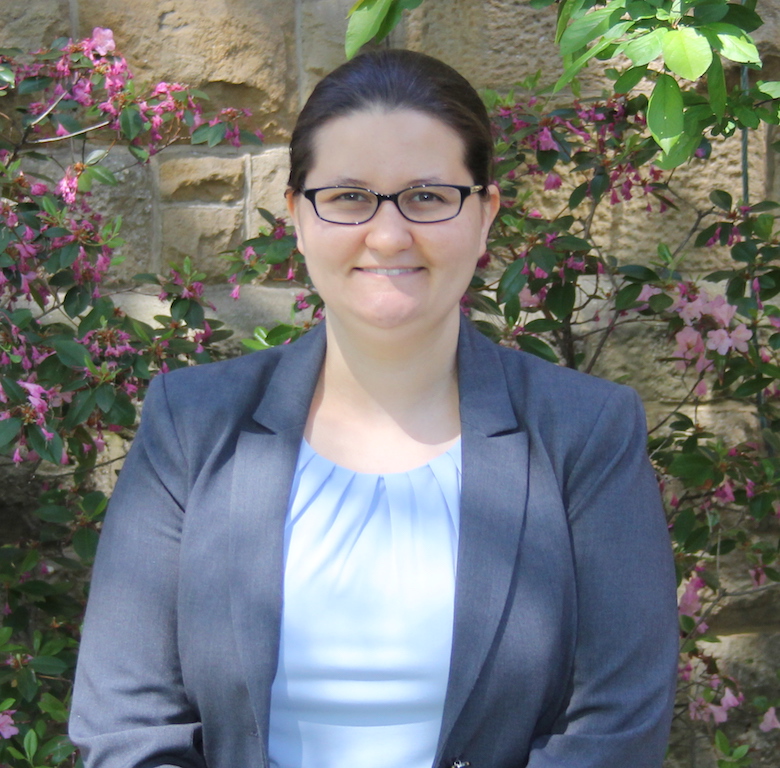
Ellen Newell, associate professor of psychology:
“I don’t want to throw students off by changing too much in the middle of the semester,” Newell says. She’s recorded class lectures for students to watch and plans to use once-a-week synchronous classes to meet with her students in real time. “I probably won’t use that time to straight up teach,” she explains. “Instead, during these live sessions I will be able to check in with students and make sure they are understanding concepts (and perhaps tell a funny, but educationally purposeful, story or two). I hope this helps students remain engaged and continue to feel connected with their Wilkes University identities. “
Newell says students in her statistics class who are working remotely will not be able to have hands-on access to a statistical analysis computer program available on University computers. The program is too expensive for students to purchase. But she and her colleagues have resolved that problem by integrating hands-on experience with the software into other classes that psychology majors’ are required to take. “As such, the students impacted by this very, very unique situation with have a slightly different timeline than their peers, but everyone will graduate with the same knowledge, experiences, and abilities,” Newell says.

Jacqueline Stewart, associate professor, Passan School of Nursing
Jacqueline Stewart, associate professor in the Passan School of Nursing, agrees. Students in her “Pharmacology for Nursing” courses still can cover the required theory, but getting to apply it in the clinical setting has been put on hold for the time being. She’s adapted the course so that nursing students can practice their assessment, critical thinking and decision-making skills via simulation videos and case studies.
“I miss being able to witness those ‘AHA!’ moments when what they’re learning in class and what they’re experiencing in clinical practice comes together,” Stewart says. “I miss hearing about those instances when they know they made a difference to their patients. It is then that they begin to understand what it really means to be a nurse.”
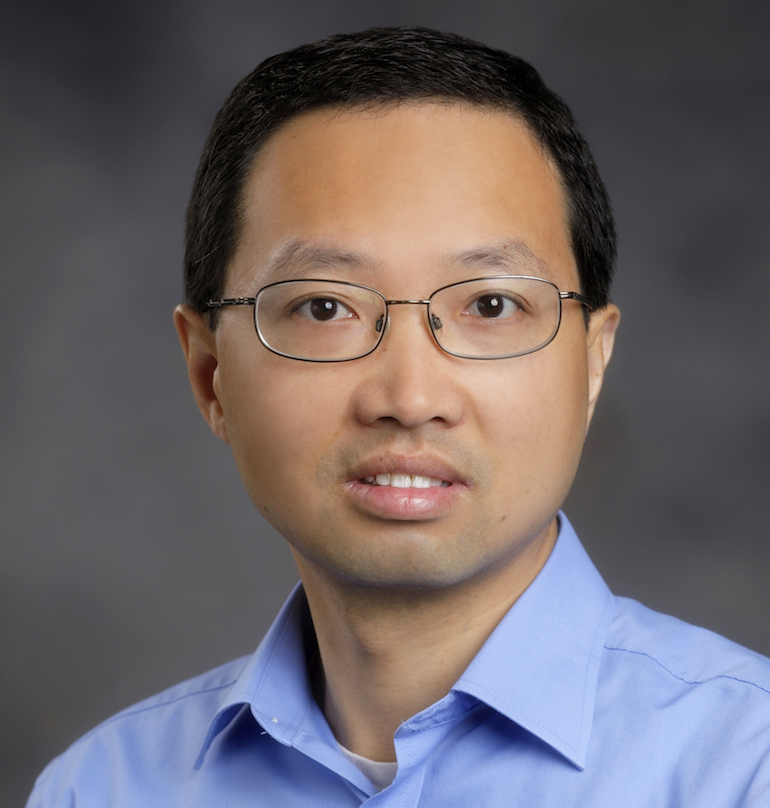
Yong Zhu, assistant professor of mechanical engineering
Zhu is opting to deliver all of his classes using a Webex meeting platform. It’s one of a number of online resources available to faculty. “They can all see my computer screen and chat or speak with me in real time. It would never be the same as face to face, but we can continue to learn. The students feel that they are taken care of during this difficult time,” he says. He notes that laboratory time when students might have been doing hands-on work is now devoted to covering the material in a different format. The class hours that would normally be spent in labs will be used to spend more time working with students on homework and exploring more detailed examples.
“So far, I think my teaching online is going pretty well. I can host more than 40 students in one Webex online meeting without any network congestion. They can all see my computer screen and chat or speak with me in real time,” Zhu says. “It would never be the same as face to face, but we can continue to learn. The students feel that they are taken care of during this difficult time.”
